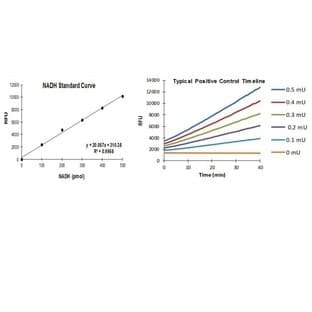
Supplier:
Alomone Labs Limited.Cat no: LX-102
BUY Kir3.2 Channel Membrane Lysate
Kir3.2 (or G-protein regulated Inward-Rectifier K+ channel, GIRK2) is a member of the family of inward rectifying K+ channels.
The family includes 15 members that are structurally and functionally different from the voltage-dependent K+ channels.
The familyпїЅs topology consists of two transmembrane domains that flank a single and highly conserved pore region with intracellular N- and C-termini. As is the case for the voltage-dependent K+ channels the functional unit for the Kir channels is composed of four subunit that can assembly as either homo or heterotetramers.
Kir channels are characterized by a K+ efflux that is limited by depolarizing membrane potentials thus making them essential for controlling resting membrane potential and K+ homeostasis.
Kir3.2 is a member of the Kir3.x subfamily that includes four members (Kir3.1- Kir3.4). The Kir3 family is characterized by the fact that the channels can be activated by neurotransmitters and other factors acting via the activation of G-protein coupled receptors. Binding of the corresponding ligand to the G-protein receptor induces the dissociation of G-alpha-GTP from the G-beta-gamma dimer.
The latter directly binds to Kir3 and activates the channe.
Kir3.2 is mainly expressed in the brain, were it co-assembles with Kir3.1 or Kir3.3 and mediates the inhibitory effects of many neurotransmitters including opioid, adrenergic, muscarinic, dopaminergic and gamma-aminobutyric acid (GABA).
Point mutations in the mouse Kir3.2 channel cause the weaver (wv) phenotype, a neurological abnormality characterized by the abnormal пїЅweavingпїЅ of the mice when they walk, hence the name weaver which is due to a substantial loss of cerebellar granule neurons. These mice also display mild local motor hyperactivity, presumably caused by the degeneration of dopaminergic neurons in the substantia nigra, spontaneous seizures and male sterility.
A peptide toxin originating from the Apis mellifera bee venom, Tertiapin (#STT-250) was shown to be a potent blocker of Kir3.2 containing channels (7 nM for Kir3.2 alone and 5.4 nM for the Kir3.1/3.2 combination).
Alomone Labs is pleased to offer an enriched Kir3.2 channel membrane lysate (LX-100) which could be used as a positive control in western blot analysis.
Membrane lysates are supplied as follows:
1 vial - Xenopus oocyte membrane lysates expressing rat Kir3.2 channel.
1 vial - equivalent amount of non-injected Xenopus oocyte membrane lysates.
Prices direct from Alomone Labs Limited.
Quick response times
Exclusive Absave savings/discounts
Latest promotions
Buy any polyclonal or monoclonal antibody from our extensive range of pre-made antibodies and for a limited time only receive a $50 discount!(T&C apply:...
New brilliant antibodies, and new lower prices!For flow cytometry reagents in general, \"bright is better.\" The violet-excitable BD Horizon™ BV421 and...
10% Discount on 2 Rabbit Polyclonal Antibody Service. With over 20 years experience, SDIX has developed into the premier US custom antibody producer,...
For the past decade scientists have extensively used ATS secondary toxin conjugates to make their own targeted toxins for in vitro use.The ability to combine...
We're so sure that you'll prefer Cayman Assay kits over your present brand that we're willing to give you a free assay kit to prove it!
Did your supplier increase the price of Fetal Bovine Serum? Did they substitute the US Origin with USDA? Well say no more! Innovative Research is still...
Bulk Cytokines with Custom Vialing.20 - 50% off cytokines, growth factors, chemokines and more...For a limited time Cell Sciences is offering substantial...
Are you planning to have a customised antibody made for your research?Since 2000, Everest has been producing a catalog containing thousands of affinity...
Top suppliers
Agrisera AB
11 products
Biotrend
Biosensis
969 products
ABBIOTEC
3011 products
SDIX
1 products
Spring Bioscience
2291 products
Cell Signaling Technology
4976 products
Rockland Immunochemicals, Inc.
7592 products
Boster Immunoleader
1533 products
OriGene Technologies Inc.
5281 products
Maine Biotechnology Services
227 products
BD (Becton, Dickinson and Company)
1 products
ABNOVA CORPORATION
Randox Life Sciences
1502 products
















